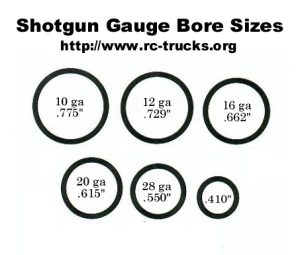Shotgun Shell Gauges: Unraveling the Key Differences
Understanding the Shotgun Shell Gauges: A Comprehensive Analysis
Shotguns have been a popular choice among hunters, sport shooters, and home defense enthusiasts for their versatility and power. However, one aspect that often confuses many is the gauge of shotgun shells. With different numbers like 12, 20, and 410, it becomes crucial to decipher the differences and understand their implications. In this article, we will delve into the world of shotgun shell gauges, untangling the mystery behind each size and exploring their various uses.

Untangling the Mystery: What Sets Different Shotgun Gauges Apart
The gauge of a shotgun refers to the diameter of its bore, or the inner part of the barrel where the shotshell travels. Interestingly, the gauge is inversely related to the size of the shotgun shell. For instance, a 12-gauge shotgun has a larger bore diameter than a 20-gauge shotgun. The gauge of a shotgun is determined by the number of lead balls, each with the same diameter as the bore, that can be created from one pound of lead. Therefore, a 12-gauge shotgun can produce twelve lead balls, while a 20-gauge shotgun can produce twenty lead balls from a pound of lead.
The most common shotgun gauges used today are 12, 20, 28, and .410 bore. The 12-gauge shotgun is the most popular and widely available, offering a balance between power and recoil. It is suitable for various applications, including hunting larger game or home defense. On the other hand, the 20-gauge shotgun, while providing less power and recoil, is a favorite choice among smaller-framed individuals or younger shooters due to its manageable size. The 28-gauge shotgun, often considered a specialty gauge, is mainly used for upland bird hunting due to its lighter weight and decreased recoil. Lastly, the .410 bore, often referred to as a caliber rather than a gauge, is the smallest shotgun size available and is primarily used for small game hunting or as an entry-level shotgun for beginners. There has also been a resurgence in the use of 16-gauge shotgun shells.

Gauge Matters: Exploring the Implications of Shotgun Shell Sizing
The choice of shotgun gauge has significant implications for the shooter. A larger gauge, such as the 12-gauge, delivers more power and a wider spread of shot, making it ideal for activities like waterfowl hunting or target shooting. However, this also results in more recoil, which can be a drawback for those with less experience or smaller frames. On the other hand, a smaller gauge like the 20-gauge offers less power and a narrower shot spread, making it suitable for shorter-range shooting or hunting smaller game.
Another aspect to consider is the availability and cost of ammunition. 12-gauge ammunition is the most readily available and affordable, making it a top choice for many shooters. Conversely, less common gauges like the 28-gauge or .410 bore are often more expensive and may be harder to find. It is vital for shooters to consider their specific needs, preferences, and budget when selecting the appropriate shotgun gauge.

There are also various options for environmentally friendly shotgun shells loaded with pellets made of steel, tungsten, bismuth and other non-lead metals.
Understanding the differences between shotgun shell gauges is essential for anyone looking to purchase a shotgun or improve their shooting skills. While the gauge determines the size of the shotgun shell, it also influences the power, recoil, and availability of ammunition. Whether you are a seasoned hunter, a sport shooter, or a home defense enthusiast, choosing the right gauge can make a significant impact on your shooting experience. So, take the time to educate yourself on the various shotgun gauges and make an informed decision that suits your needs and preferences.


Comments